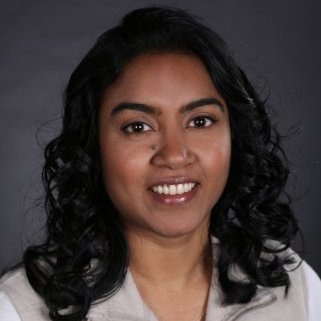
Graduation day at Stanford
Stanford University, Stanford
Master of Science (M.S.), Management Science and Engineering
The Accelerator
When I switched from a product strategy role to a product management role at Microsoft, I decided to go deep into data science side of things and starting taking Master’s degree level courses from Stanford Statistics department part time with credits counting towards a Master’s Degree in Management Science and Engineering.
In December 2016, we decided to move back to India by the second half of 2017 and to accelerate the completion of degree, I converted to a full-time student. During this time, I enjoyed a full buffet of courses ranging from the School of Engineering to Computer Science department to the Graduate School of Business to even a PhD level class.
To say that this was an amazing experience would be an understatement. It was actually a truly life-changing one. From pitching ideas to a VC firm to presenting new market strategy to the CEO of Telenav, from developing and implementing social media strategy for a startup to attending guest lectures from the likes of Phil Libin, Steve Blank, Peter Fenton and Neal Mohan, from authoring a package in R to a top-3 finish in Kaggle in-class competition; it is a difficult to pick my favourite Stanford experience!
Graduated with a GPA of 3.95/4.0. GRE: 334/340.
Key Projects

R package to analyze US restaurant data
Designed and developed an R package to analyze US restaurant data from Factual and Yelp databases.
This package would have typically been used by a restaurant blog/magazine to analyze/visualize restaurant trends, but could also be used by QSR chains to find greenfield areas to open new stores.
Some functionalities that the package offered included: finding/plotting restaurants by diet-preference (vegan, glutten-free etc.), accessibility (kid-friendly, wheelchair-accessibility etc.), dress code etc. and comparison of dominance of two or more chains by state (For ex: Domino's vs Pizza Hut)

New product-line strategy for Telenav
Exploring if Telenav should get into insurance business using data from connected cars
Conducted primary research (both quantitative and qualitative), secondary research and industry and competitive landscape analysis for a new business line for Telenav, a market leader in personalized navigation. Presented final recommendations and the GTM strategy to the CEO of the company.
Few years later, Telenav launched an insurance service based on connected cars. (This was in line with our recommendations, but I have no way of knowing how much our recommendations influenced the decision. :-))

ALS Disease Progression Challenge: Kaggle
A statistical prediction challenge to predict the progression rate of ALS (Lou Ghreig's disease)
ALS is a fatal disease, but its progression varies: some patients die within 2 years of diagnosis and others survive through decades. The goal here was to predict ALS progression rate given a set of potentially relevant predictors (including demographics, vital stats, and lab test outcomes) collected during the first 3 months of diagnosis.
Our team developed advanced models (including Bagging, Random Forests, Boosted Decision Trees, and BART) and attained third place among 90 participating teams.

Digital Advertising for Select-a-Sis
Facebook/Instagram marketing for Select A Sis, A Seattle-based startup
Designed and implemented digital ads strategy for Select A Sis, a Seattle-based startup focused on making university sorority-recruitment more efficient. Utilized FB Interest-based targeting, lookalike audience ads and FB Audience Network for ad-targeting on FB and Instagram.
Given the target demographic, Instagram ads worked the best, but once we added location-dimension to FB advertising (Geo-targeting within 1-2 miles of university location), FB campaigns' performance improved phenomenally.





